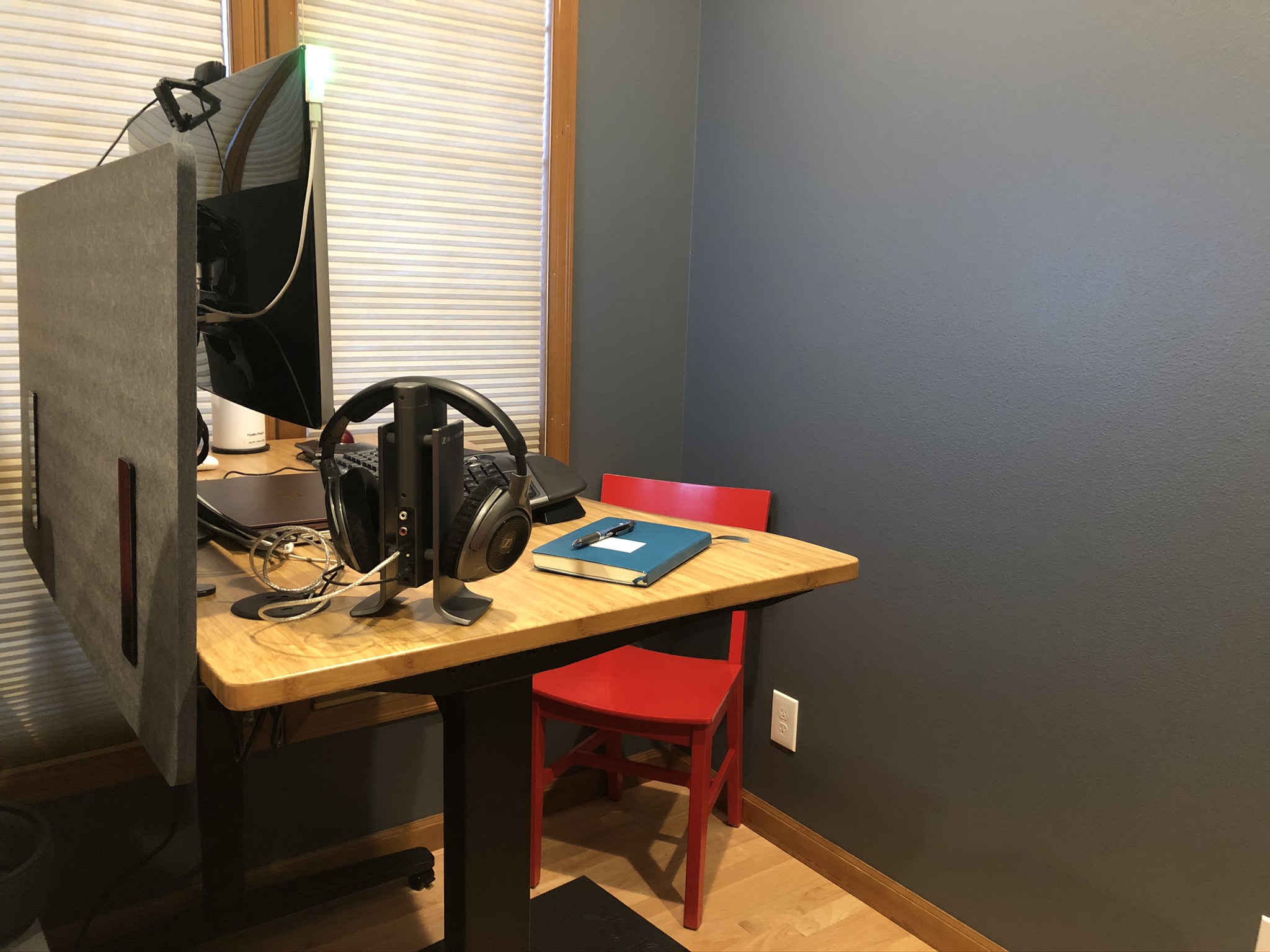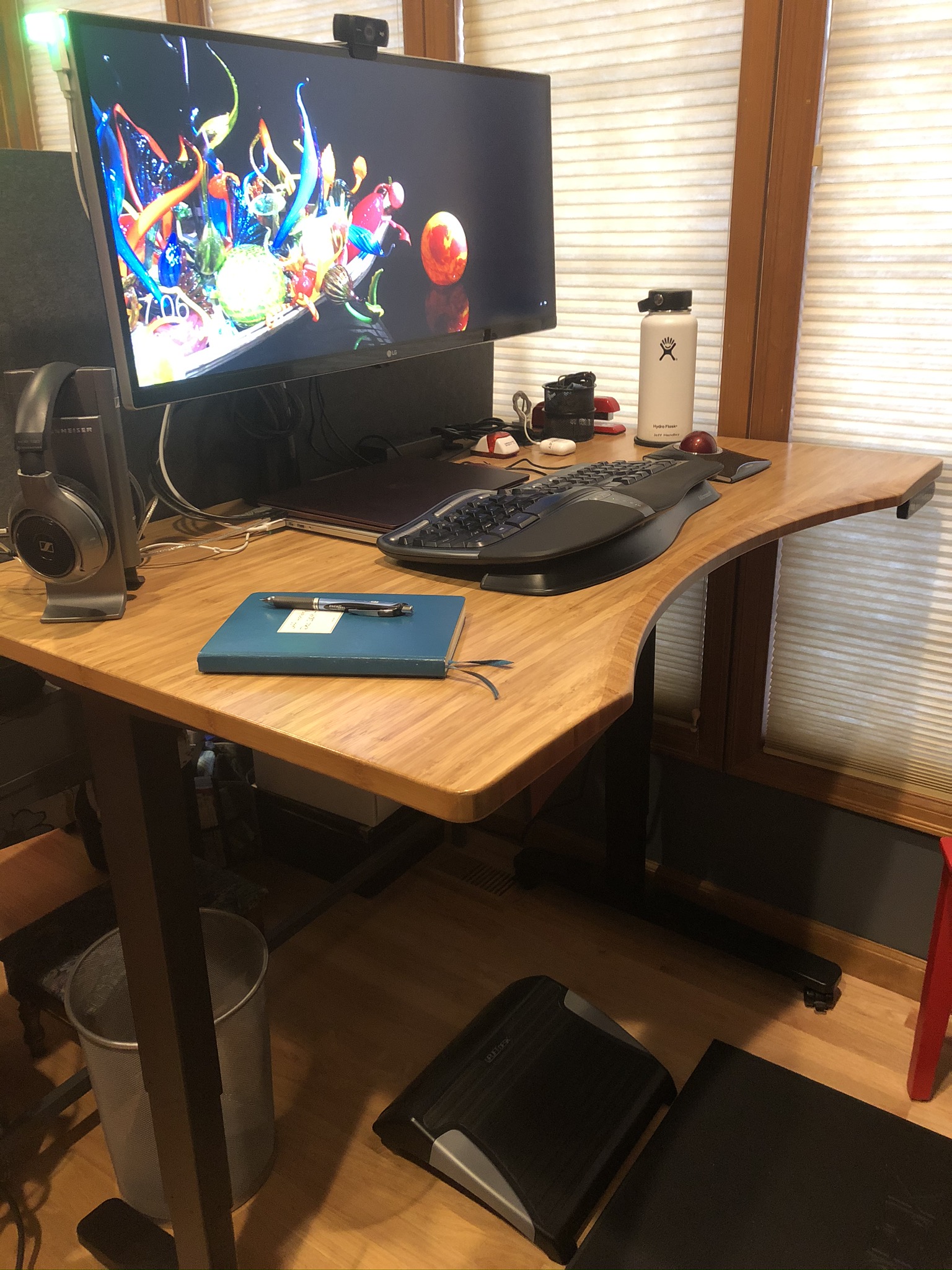I’ve been focusing on leading geo-distributed teams for the last several years. I believe the software industry will keep moving in that direction and I want to be as close to the leading edge of that shift as possible. My primary motivation is to ensure that my teams are well prepared to succeed in the geo-distributed engineering culture. Due to COVID-19, there are more of us working from home than ever before and people are eagerly helping others acclimate.
During my time at SAP Concur, I worked in a very distributed engineering group and I previosly wrote about fostering remote work there. As my role expanded from leading a team to leading a group of 10 teams, I needed to alter my efforts to match the group’s needs. I had a few engineering managers in my group that worked from other offices or from home; I consciously invested in helping them succeed and grow their careers while being remote. I wanted to push the envelope and determine what parts of my job I could do from home and what still required me to be in the office so that I could try to shift the culture where needed.
Setting up a Home Office

Right away, I discovered that it’s critical to have a space in the house that is dedicated to being my home office. We don’t have such a room in our home; we have a den but it’s a multi-purpose room for our household. I couldn’t take over the whole room from either a stuff perspective, or from a usage perspective. When I’m working from home, I’m usually the only one in the room, but my family needs to be in and out of the room many times per day–we arranged the furniture so that would be OK. My camera is positioned so I can have meetings at any time and not subject other attendees to movement in my background (which can immediately disrupt the comfort of a one-on-one meeting).
My desk is situated in the corner of the room so that my family can come into the room, grab school supplies, books, printouts, or anything else from the room that they need. My wife also has a desk in the room and she can work in the room while I’m in a meeting. The acoustic/privacy panel on my desk helps keep us from distracting one another. I keep my desk tidy and free of distractions.

I also use a Luxafor Flag light on my monitor that I keep either green (available) or red (on a call) so that my family members know whether or not I can be disturbed by simply cracking the door open and peeking in. This isn’t anywhere as fancy as what others have set up, but it does the job nicely. I actually use a Luxafor Flag at the office for the same purpose.
If you are going to manage a team from home (or work from home full-time for any reason), you should invest in your home office setup. This investment will likely include time, energy, and money. You will get a good return on this investment.
Other Tips
Beyond the home office setup, here are some other tips from my experience:
- Turn your camera on for every meeting
- Schedule meetings to accomodate the time zones of your team members (respect their precious mealtimes)
- Maintain your own working hours too
- Protect your precious mealtimes
- Talk with your team to decide which communication channels they want to use for which purposes–don’t assume everyone wants to use chat for everything
- Emphasize to your team that if they see a chat message from you, they should consider it to be an asynchronous message to be responded to at their first convenience–they do not need to interrupt whatever they’re doing to reply to your chat messages immediately
- To foster this culture, behave the same way yourself
- Create a permanent team-wide virtual meeting space that can be used for standups and ad-hoc discussions
- For the COVID-19 pandemic, my manager set up a “Water Cooler” meeting where folks across his group can “hang out” whenever they want, either with text chat or by jumping into the video call
- Use those ad-hoc virtual meetings yourself! Conduct ad-hoc discussions there instead of in one-on-one chats.
- If you’ve recently transitioned into working from home, keep your standing one-on-one meetings on the calendar
- In the COVID-19 situation, check with your team members about their schedules and be ready to be as flexible as you can be
- In these unusual times, be sure to ask your team members how they’re doing, what stress they have at the moment, and if there’s anything they need
- Be sure your whole team is getting together (virtually) on a regular basis
- Ensure every team member is involved in team-wide discussions
- Proactively engage with your peers, partners, and superiors
- Send chat messages to thank them for something or ask for their guidance on something
- If you would swing by their desk in a physical office, swing by their chat window instead
- Maintain standing one-on-one meetings with peers and other close partners (and ask them to turn on their camera if needed)
- When meetings end, don’t always hang up right away
- Often, end-of-meeting courtesies prompt follow-up conversations among participants
- Wait a moment to see if the meeting actually ends or if one of those follow-ups emerges
- If you want to have a follow-up chat with someone, ask them before they hang up (and allow others to hear you ask)
- Remember to maintain your work/life balance!
- Don’t forget to eat and drink!
- Know that every team, group, company, and situation is different
- Do not take this list or any list as gospel
- Invest in your own culture; experiment and learn
- Ask your team often what is working and what isn’t working
Just like any other skill, learning to manage a team from home will require personal growth. Invest in this skill like you do for any other professional skill. The more you invest, the more apparent it will be to your team that you are working to improve this skill and they will undoubtedly appreciate your investments.